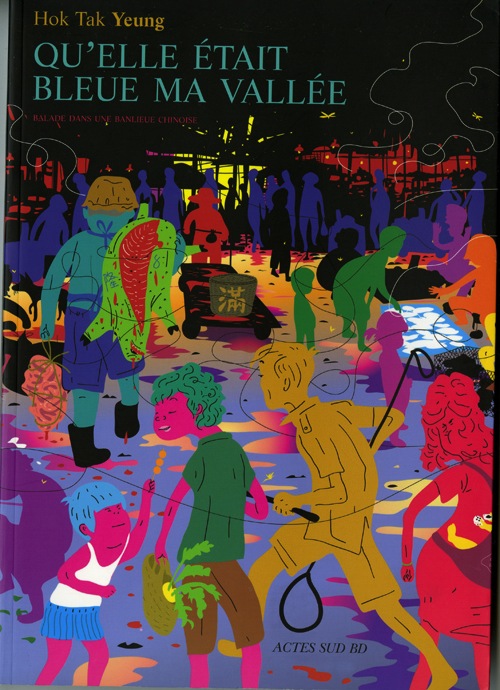Several attendees of the Angoulême comics festival are still filing their reports.
A must-read is this report on the Rights Panel, including such smart folks as Peggy Burns, Carol Burrell, and Calista Brill talking about publishing realities:
If there was one lesson Calista Brill from First Second had learned, it’s the simple fact that it is impossible to predict whether a graphic novel will be a success or not. Still, there are a few factors that can contribute to that success, as she explained with the example of Guibert’s Le Photographe. That book was very timely and topical when it was published, and the author was available to promote it himself. In order for the American market to pick them up, books have to deal with subject matter that Americans are familiar with, or that at least has a global feel to it.
Dash Shaw noted a new style of comics creation and found one to his liking (Above):
The computer lines are absolutely constant, no variation. Not necessarily better or worse, just different. This is probably going to become more and more common and eventually, like comics coloring, the majority of line art will also be done on the computer. I can’t help but think it’s a fundamentally different experience for the cartoonist. A lot of working on comics, for me, involves having the pages sitting around or taped on the wall and glancing at them while eating cereal or walking around the room. When it’s on the computer, you’re only seeing the pages when you’re actively working on them. They’re never drifting around in real space. Think about it: for all of the New Yorker illustrations that are colored by the computer (basically, all of them) the illustrator didn’t see that lying on their table or sitting on their desk. They didn’t decide to dab a different color on it after it caught their eye while they were doing something else. They clicked on the computer, finished it, and the only time they see it in real space is after it’s been printed.
Paul Karasik just had an amazing time
Meanwhile the neglected spouse, “Art”, in the form of artists’ exhibitions, events, interviews, and roundtable discussions appear randomly around town wherever they can find a space. The free map supposedly directing you to your destination is absolutely worthless (it was designed this year by Gracie Allen and Associates). Hence, you kind of stumble upon these little Art happenings if you’re lucky. Actual comic art, with no place in the center of the festival, displaces the ordinary living spaces of the local residents. I saw two elderly Angoulinians storming away from a church, murmuring and twiddling their rosaries in a panic because nobody had told them that twelve o’clock Mass had been preempted by a live Comic Art event: a Ninja draw-off between two manga cartoonists.
Of some amusement: the previous two posts in Karasik’s little used blog are a report on an Italian comics fest in 2009 and San Dieg00 2007. Nice little time capsule to compare and contrast.
Joe Keatinge has a nice report that sums up the different parts of the show for those who are not familiar:
It turned out he was part of a larger block of programming put on the Platinum Group, which, as I understand it, is a collective of various comics researchers and experts, including the museum itself. They went over its new initiatives and findings, including the establishment of a Scandinavian comics society, Sunday Press Publisher Peter Maresca’s new Forgotten Fantasy Sunday Comics and the museum’s latest discoveries, such as lost pages of the original graphic novel, Maestro, and an entire sketchbook believed to belong to the artist Cham. Paul presented two pieces, one about his upcoming book How To Read Nancy (in which he flawlessly breaks down 40 elements of comics in one three panel Nancy Strip) and a brief history of Adaptation in comics, including examples from the awful Partridge Family series and his brilliant adaptation with Asterios Polyp (itself a Grand Jury winner at Angouleme!) cartoonist David Mazzuchelli, Paul Auster’s City of Glass.




